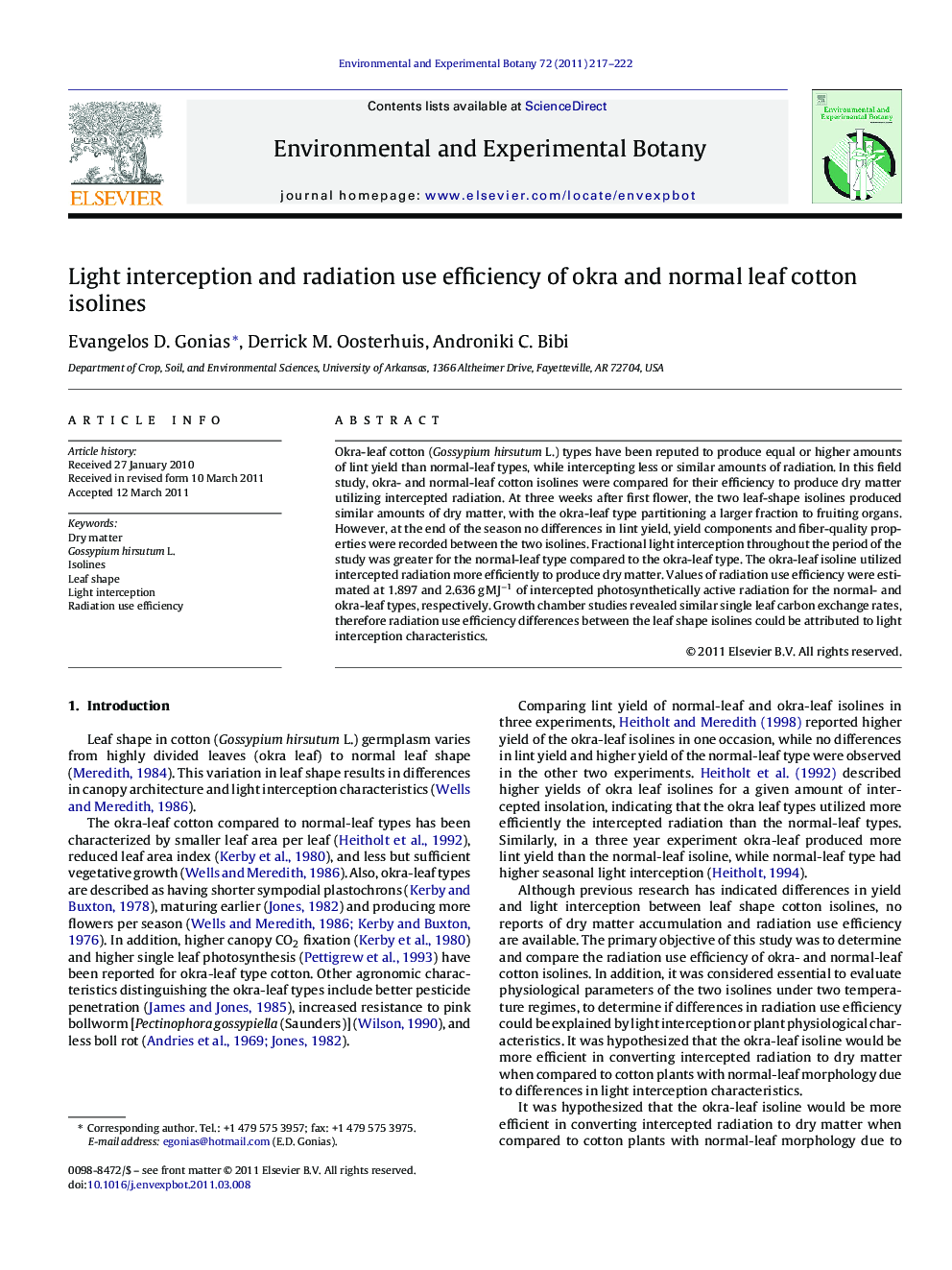| Article ID | Journal | Published Year | Pages | File Type |
|---|---|---|---|---|
| 4554768 | Environmental and Experimental Botany | 2011 | 6 Pages |
Okra-leaf cotton (Gossypium hirsutum L.) types have been reputed to produce equal or higher amounts of lint yield than normal-leaf types, while intercepting less or similar amounts of radiation. In this field study, okra- and normal-leaf cotton isolines were compared for their efficiency to produce dry matter utilizing intercepted radiation. At three weeks after first flower, the two leaf-shape isolines produced similar amounts of dry matter, with the okra-leaf type partitioning a larger fraction to fruiting organs. However, at the end of the season no differences in lint yield, yield components and fiber-quality properties were recorded between the two isolines. Fractional light interception throughout the period of the study was greater for the normal-leaf type compared to the okra-leaf type. The okra-leaf isoline utilized intercepted radiation more efficiently to produce dry matter. Values of radiation use efficiency were estimated at 1.897 and 2.636 g MJ−1 of intercepted photosynthetically active radiation for the normal- and okra-leaf types, respectively. Growth chamber studies revealed similar single leaf carbon exchange rates, therefore radiation use efficiency differences between the leaf shape isolines could be attributed to light interception characteristics.
► The normal-leaf isoline intercepted a higher amount of incident radiation. ► The okra-leaf isoline had higher radiation use efficiency than the normal-leaf. ► No differences on lint yield, yield components, and fiber quality were recorded. ► The two isolines did not differ on physiological parameters measured.
